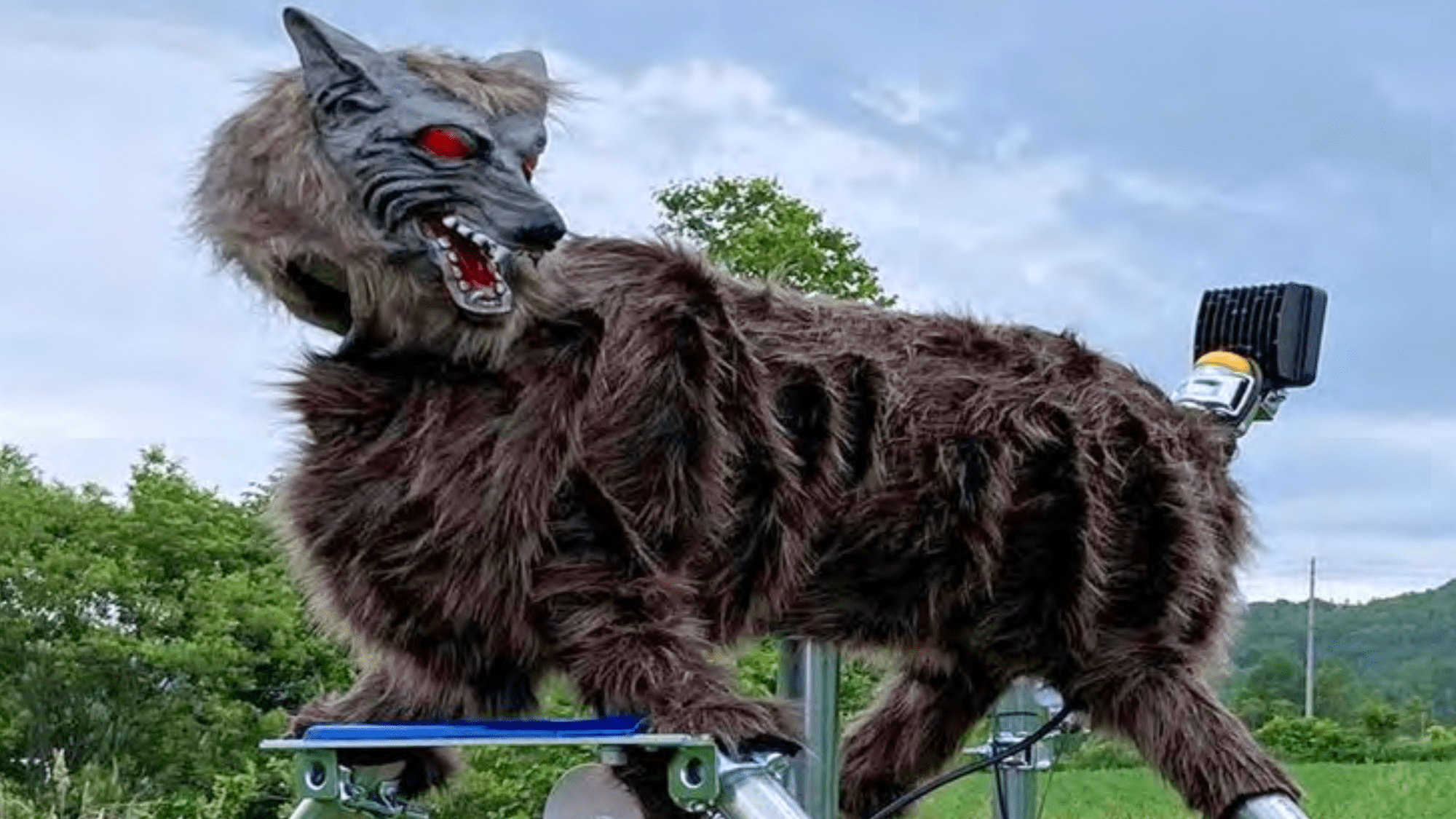

Stories about solar-powered robotic wolves first surfaced back in 2017 after Japanese researchers began testing prototypes to combat wild boars’ devastating encroachment into farmlands. Since then, a company called Wolf Kamuy expanded sales of its sentry products featuring menacing fangs, fur, flashing red LED “eyes,” and a head capable of shaking side-to-side while emitting a 90 decibel howl. But boars aren’t the only problem plaguing rural Japanese communities. According to recent reports, Wolf Kamuy is now offering many of its faux-wolves as bear deterrence.
[Related: How to watch Alaska’s fat bears.]
It turns out the “Super Monster Wolf” isn’t just effective at protecting farmers’ crops—it’s also pretty good at protecting the farmers themselves. As reported October 1 via the BBC, bears are an increasingly difficult, sometimes even deadly nuisance in many areas of Japan thanks to a combination of serious factors, including climate change, deforestation,and urban expansion. What’s more, bear populations in regions such as Hokkaido appear to be actually increasing as Japan faces an aging population and declining birth rates. According to the BBC, some researchers estimate a total of over 22,000 bears located around Hokkaido. Because of all this, the region recorded at least 150 bear attacks over the past six decades—with four fatalities in 2021 alone. Meanwhile, bears continue to wander into more crowded towns and cities bordering wildlife areas.
Enter: the Super Monster Wolf. By installing the guard bots in urban locales, experts hope to deter bears from wandering into populated areas to potentially harm both humans and themselves. Researchers previously estimated that a robo-wolf’s howls effectively deterred bears from encroaching within approximately 1-square-km (about 0.38 square mi) of its installation—arguably better than many electric fence perimeters. With strategic placement, Super Monster Wolves could help elderly communities, and protect the bears.
Of course, humanity cannot solely rely on an army of robot wolves to protect us from bear attacks. Bears (not to mention countless other species) face immense existential threats in the face of ongoing climate change calamities, and it’s not the bears’ fault they are increasingly desperate to find food sources. The best remedy, therefore, is to continue focusing on climate solutions like conservation, renewable energy, and sustainable urban planning, rather than stopgaps like the (admittedly rad) Super Monster Wolf.
